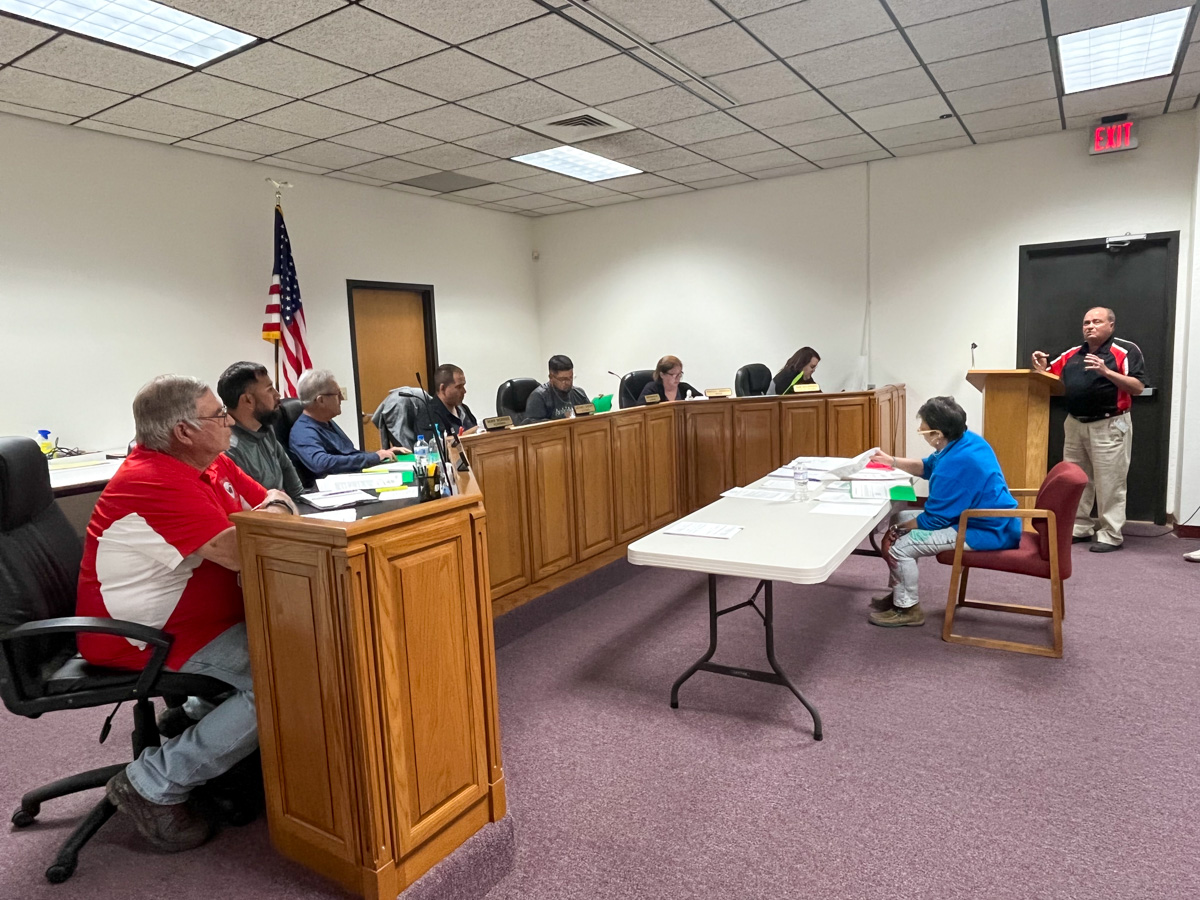By Shanna Cummings

It was civics in action.
During the November school board meeting, board members and superintendent Ken Baugh discussed the need for speed reducing devices in the school zone to slow traffic during school hours and events like games. A survey performed by the school showed the overwhelming majority of parents and employees support some method of slowing down traffic around the school and sports areas.
“We’re just lucky nothing has happened yet,” one board member commented.
City Council had previously nixed the use of speed bumps, citing the Texas Municipal League (TML) suggestion that a city might be held liable for damage done by speed bumps if they are considered an obstruction according to Texas traffic law. The traffic Q&A document provided by TML also states that cases have been decided where a city was held liable because of traffic obstructions like piles of gravel. No such cases have addressed speed bumps.
The school board decided to confront the city council again about installing some form of speed reducing device in the school zone.
That was the crux of the discussion during Tuesday evening’s city council meeting, where Baugh, school principal Charles Gonzalez, school employees, parents, and members of the school board presented the question once again: if the school district pays for a traffic study, would the city allow the district to install whatever speed reducing devices the study recommends?
The school district has committed to paying for the traffic study, which may cost as much as $54,000, though the district is looking into options. The study will include the school campus, as well as the sports fields and accompanying facilities. It will likely include an analysis of the traffic patterns and circulation, as well as incident history and other considerations and provide suggestions for remedying identified problems. These can include speed cushions, reduced speed signage and increased lighting.
“But to spend $54,000 and the council may not even approve it,” Baugh said during the meeting, “That’s a waste of money and time and effort.”
The school district will also pay for installation and maintenance of the devices. Normally, road-related construction and maintenance falls to the city.
The school district and city council were at odds only about the use of speed cushions, not the need for speed reduction. Speed cushions are made of durable rubber shaped like a mostly flattened speed hump. They come in several different sizes and are spaced apart horizontally to allow emergency vehicles to straddle them rather than have to drive over them during an emergency.
“I know it’s an inconvenience, but they [would be] there because folks won’t slow down,” Baugh said. “And I don’t really have a lot of sympathy for that because they’re around our school.”
“I really don’t want to be the one around whenever we finally do hit somebody around the school,” Baugh said. “It’s not going to make a lot of difference to parents when I say ‘but I’ve told the city.’ They’re not going to care. They don’t want to hear that.”
The majority of the council members expressed support for speed cushions, citing the safety of students and residents of all ages who walk in that area. The lone dissenting voice came from Alderman Lynden McDonald.
“First of all, I’m all for the safety of the kids,” McDonald said. “But my question to you is, you got the Q&A from TML. I have to ask you: do you ignore advice from your legal counsel?”
“My whole basis is what legal authority has directed the city to do. That’s it. I mean, it’s that simple,” McDonald said.
TML makes recommendations to cities that help them avoid or navigate potential legal issues, cities are not required to follow the recommendations, only take them into consideration. The ultimate decision rests with the city council. Also, barriers and other speed reducing measures have been set up all over town without a traffic study having been performed.
Many cities and towns in Texas have ignored TML counsel and installed speed cushions where necessary.
“Your TML recommendations, those are recommendations, not laws,” Baugh said. “It’s just up to you guys. You just have to confer with your attorneys, and just make a decision that you think is best.”
“We’re going to pay for this, but this is a city responsibility,” Baugh continued. “This is not a school responsibility. But we’re in a community and we need to be together and we need to do things together.”
“I’m all for it,” alderman Rene Mendoza, Jr said. “Anything that makes it safer around there for the kids and for staff for y’all, I’m all for it.”
The city would still be responsible for liability for the speed cushions if they are used, and will need to modify city ordinance to accommodate them.
The final complication came from determining a motion. Most of the council members wanted to approve the installation of whatever speed reducing measures the traffic study recommended. McDonald wanted to wait to approve that step until after the council could review the traffic study. The motion voted upon included permission for the school district to go forward after the study. McDonald opposed.
The next step is for the school board to determine and approve a firm to perform a study, which won’t happen until the January 24, 2022 meeting at the earliest.











